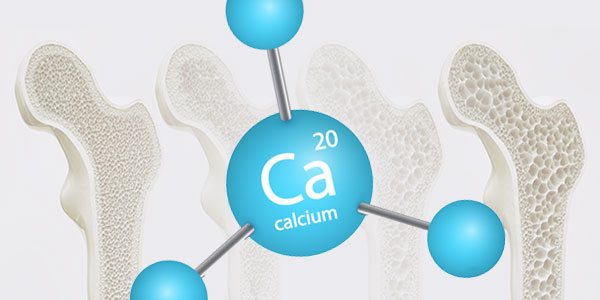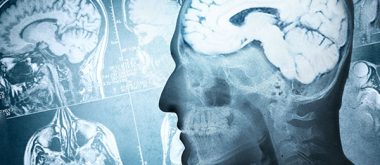One unfortunate effect of menopause is the increased risk of osteoporosis. Fortunately, calcium can help.
What is Osteoporosis?
Osteoporosis is the decrease in bone mass. Bone is a living tissue with its own blood supply. The outer layer of the bone protects a material called trabecular bone, or cancellous bone. Trabecular bone resembles a sponge in that it is porous and has many holes. It is weaker than the bone that surrounds it, which is called cortical bone. With osteoporosis, the holes in the trabecular bone enlarge, which makes the overall bone weaker than it should be. This is what leads to osteoporosis and fracturing.
Why Does Menopause Cause Osteoporosis?
The high levels of estrogen that are present in the body before menopause or perimenopause, the time just before it, supports the building of bone. Until around age 35, more bone is built than is lost. Eventually, as the levels of estrogen continue to decrease, more bone is lost until the patient develops osteoporosis. The symptoms of osteoporosis are usually silent until the bones become so weak that they break. In women, the bones usually break in the lower back or the hips, which leads to chronic pain. Not only this, but a woman who has had a fracture due to osteoporosis is at high risk of having another.
Why Calcium?
Calcium, or Ca, is an essential mineral, which means it is necessary for life. It is the most abundant mineral in the body and is crucial in creating strong bones and teeth. The mineral does not work alone but needs to be taken in the presence of the minerals phosphorus and magnesium and the vitamins A, C and D. Many people can get enough Ca through their food, and it is abundant in dairy products and bone meal. But many studies have shown that most women don’t get enough Ca. This is true even of premenopausal women and even girls.
 Supplemental Ca can be tricky because the mineral can be difficult for the body to use if several factors aren’t present. For example, if enough acid isn’t present in the stomach, Ca can’t be dissolved and utilized. Instead, it builds up in the tissues or the joints, where it leads to bone spurs. If the above-mentioned vitamins and minerals aren’t present in the right amounts, Ca is hard to absorb. Too much fat in the body binds with the mineral and creates oxalic acid, which can lead to gout, kidney stones or stones in the gallbladder. Alcohol and smoking deplete levels of the mineral. Even stress and strenuous exercise affect how much Ca the body can effectively use.
Supplemental Ca can be tricky because the mineral can be difficult for the body to use if several factors aren’t present. For example, if enough acid isn’t present in the stomach, Ca can’t be dissolved and utilized. Instead, it builds up in the tissues or the joints, where it leads to bone spurs. If the above-mentioned vitamins and minerals aren’t present in the right amounts, Ca is hard to absorb. Too much fat in the body binds with the mineral and creates oxalic acid, which can lead to gout, kidney stones or stones in the gallbladder. Alcohol and smoking deplete levels of the mineral. Even stress and strenuous exercise affect how much Ca the body can effectively use.
Even if all the other requirements are present, the body only absorbs between 20 to 30 percent of the mineral, and Ca that is unabsorbed is excreted. This leads to people taking too much Ca, or physicians overprescribing it. Besides stones, some doctors fear too much Ca can lead to heart and vascular problems and dementia. It can even, ironically, put a woman at higher risk of bone fractures. The recommended daily dose for menopausal women ranges from 700 to 1200 milligrams.
Osteoporosis, a Factor During Andropause
While osteoporosis is more common among older women due to the hormonal changes brought on by menopause, men are not in the clear. According to the International Osteoporosis Foundation, one in five men over the age of 50 will experience a fracture due to osteoporosis. Men’s link to osteoporosis later on in life is often times linked to lower levels of testosterone associated with the onset of andropause.
“While women experience more dramatic losses of bone during menopause due to hormonal shifts, men’s bone loss is more steady in relation to andropause, where testosterone levels slowly drop after 40 years of age,” explains Kelly R. Jones MS, RD, CSSD, LDN.
How the Body Uses Calcium for Other Functions
The body uses Ca for other functions, including support of the cardiovascular system, muscle growth, muscle contraction, the proper functioning of neurotransmitters and the absorption of iron. If the Ca that a person ingests isn’t needed for these processes, the extra goes to the bones to be used if the levels of mineral in the diet fall. This is why it’s important to get the right amounts of the mineral daily.
Additional studies have begun to look into the link that Ca has in helping reduce cardiovascular disease risk. This impact is due to Ca’s ability to decrease intestinal absorption of lipids, increase lipid excretion, lower cholesterol levels in the blood, and promote calcium influx into cells. In a study conducted by Iowa Women’s Health, higher calcium intake from diet and/or supplements was associated with reduced ischemic heart disease mortality in postmenopausal women





